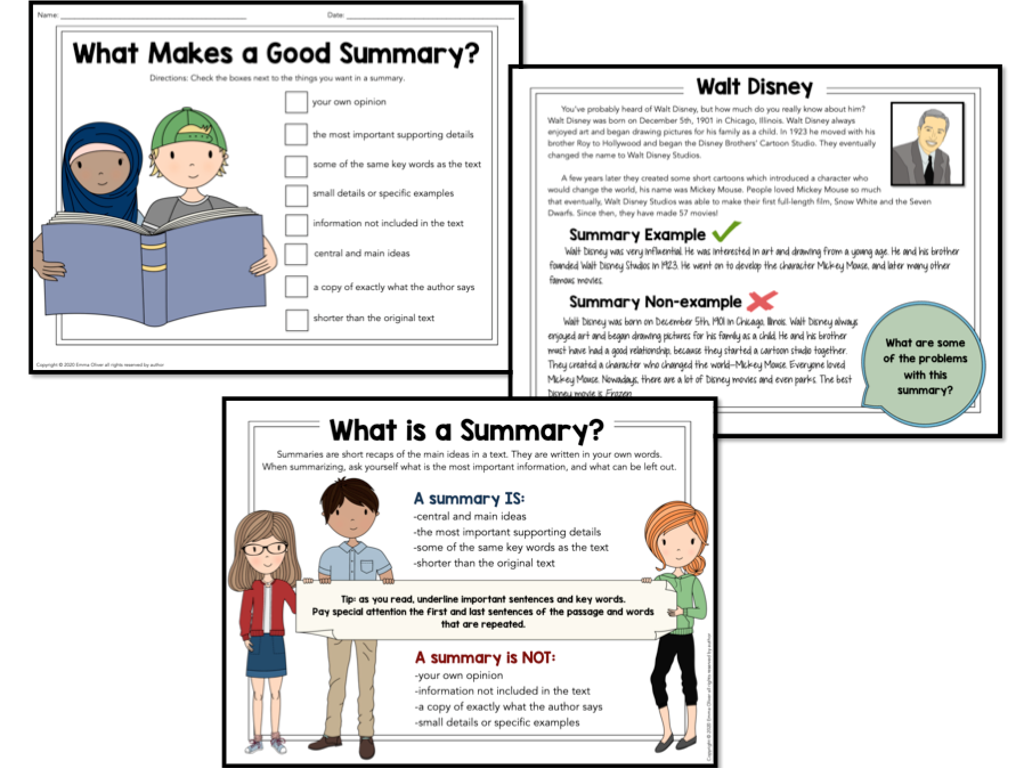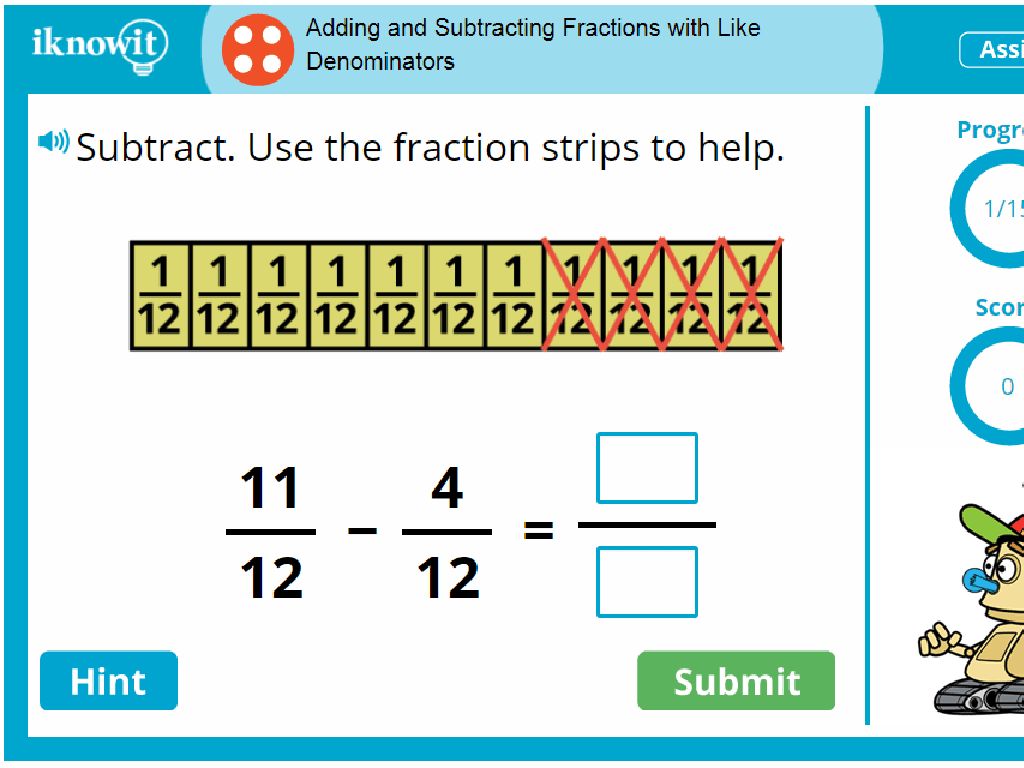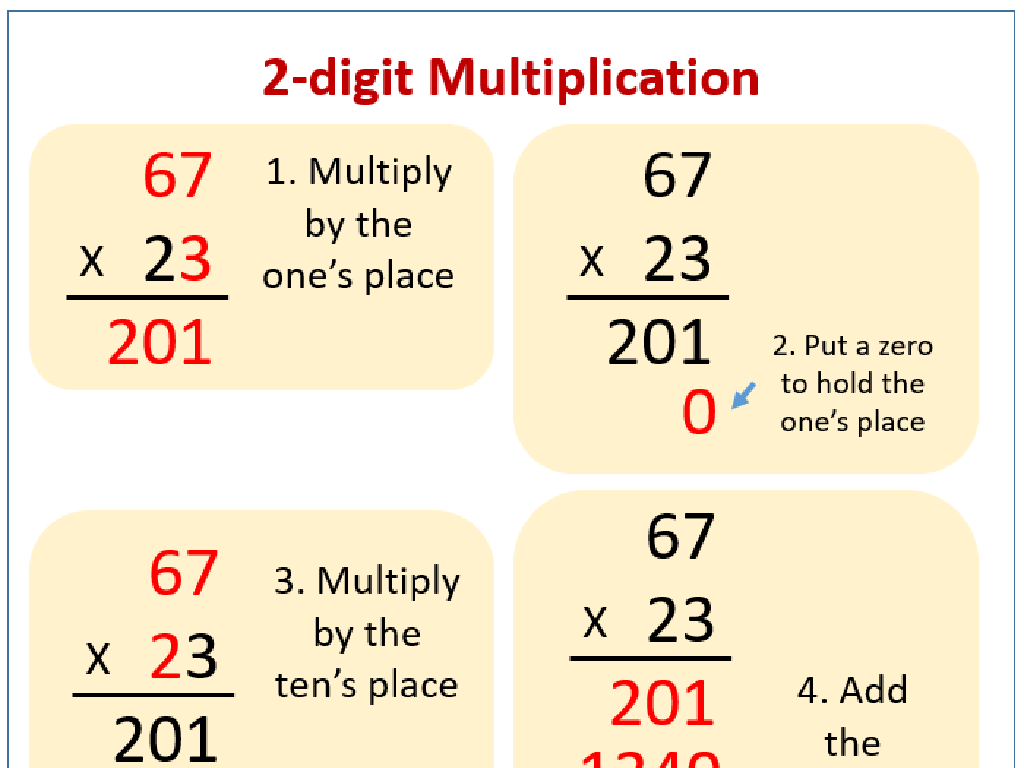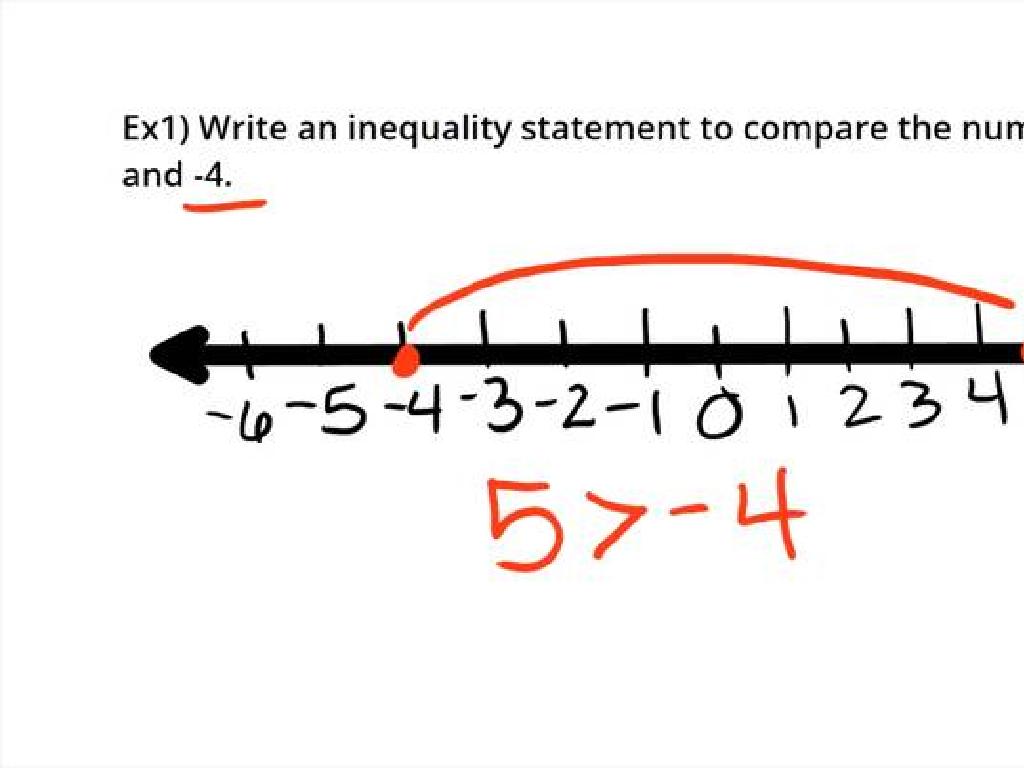Order Adjectives
Subject: Language arts
Grade: Fifth grade
Topic: Adjectives And Adverbs
Please LOG IN to download the presentation. Access is available to registered users only.
View More Content
Today’s Adventure: Order of Adjectives!
– Discovering adjective order
– Describing things beautifully
– Adjectives add detail and beauty to our sentences.
– Significance of adjective order
– The order affects how natural a sentence sounds.
– Crafting sentences with care
– Let’s learn to arrange adjectives like native speakers.
|
This slide introduces the concept of the order of adjectives, which is crucial for creating clear and aesthetically pleasing sentences. Emphasize that adjectives are not just thrown randomly into a sentence; they follow a specific order that native speakers use instinctively. Explain that this order often goes by size, age, shape, color, origin, material, and purpose. Use examples to illustrate how changing the order can change the sentence’s meaning or make it sound ‘off’ to a native speaker. Encourage students to practice by describing objects around the classroom or their favorite things, paying attention to the adjective order.
Exploring Adjectives
– Adjectives describe nouns
– Examples: blue, happy, seven, fuzzy
– ‘Blue’ describes color, ‘happy’ feelings, ‘seven’ quantity, ‘fuzzy’ texture
– Describe classroom objects
– Pick items in class and think of adjectives for them
– Practice using adjectives
– We’ll write sentences with our adjectives
|
Begin with a quick review of adjectives, ensuring students recall that these are descriptive words that modify nouns. Provide clear examples, highlighting how adjectives can describe color, feeling, quantity, and texture. Engage the class by having them look around the room and come up with adjectives for various objects they see. This will make the concept tangible and relevant. Finally, have students practice creating sentences using the adjectives they’ve identified, reinforcing their understanding of how adjectives function within a sentence structure. Encourage creativity and praise the use of vivid and precise adjectives.
The Order of Adjectives
– Adjectives follow a specific order
– Categories: Quantity, Quality, and more
– Quantity before quality, then size, age, shape, color, proper adjective, and purpose
– Understanding adjective order
– Why ‘three large round tables’ not ’round large three tables’?
– Practice with examples
– ‘Five ripe red apples’ vs. ‘red ripe five apples’
|
This slide introduces the concept of the order of adjectives to fifth-grade students. It’s crucial to explain that in English, when we use multiple adjectives to describe a noun, we have to put them in a particular order. The categories to remember are quantity, quality, size, age, shape, color, proper adjective, and purpose. Use examples to illustrate how the meaning can change if the order is incorrect, and why it’s important to maintain this order for clarity. Encourage students to come up with their own examples and to practice rearranging adjectives to fit the correct order. This will help them write more clearly and be understood better by others.
The Importance of Adjective Order
– Adjective order affects sentence flow
– Correct order improves comprehension
– Example: Describing a dragon
– ‘A big old green dragon’ sounds natural
– ‘Big old green’ vs ‘Green old big’
– ‘A green old big dragon’ sounds awkward
|
This slide emphasizes the importance of the correct order of adjectives in a sentence. When adjectives are out of order, sentences can sound confusing or just plain wrong. By teaching students the standard order of adjectives, we help them communicate more clearly. For example, when describing a dragon, saying ‘a big old green dragon’ follows the conventional order of size, age, color, making it sound natural. In contrast, ‘a green old big dragon’ disrupts this order and sounds awkward. Encourage students to practice by describing objects around them, using adjectives in the correct order to see how it changes the sentence’s clarity.
Practice Time: Ordering Adjectives
– Practice with example sentences
– Rearrange adjectives correctly
– ‘The big, red ball’ not ‘The red, big ball’
– Partner up for discussion
– Explain your choices to each other
– Understand the correct order
– Why does ‘small, green apple’ sound better than ‘green, small apple’?
|
This slide is for a class activity focused on the practical application of ordering adjectives. Students will work with example sentences, rearranging the adjectives to make them sound correct. They should partner up to discuss their choices, which encourages collaborative learning and critical thinking. The teacher should facilitate by providing guidance on the conventional order of adjectives in English (quantity, quality, size, age, shape, color, proper adjective, purpose). After the activity, discuss as a class why certain orders sound more natural, reinforcing the rules and helping students internalize them. Possible activities include sorting flashcards, rewriting scrambled sentences, and peer review of each other’s work.
Your Turn: Crafting Sentences with Adjectives
– Create sentences with adjectives and a noun
– Follow the correct adjective order
– Size, Quality, Age, Shape, Color, Origin, Material, Purpose
– Share your creative sentences
– Learn from classmates’ examples
|
This slide prompts students to apply their knowledge of the order of adjectives in a practical exercise. They are to construct sentences using a variety of adjectives and a noun, ensuring they place the adjectives in the correct sequence. The correct order typically is: Quantity or number, Quality or opinion, Size, Age, Shape, Color, Proper adjective (often nationality, other place of origin, or material), Purpose or qualifier. Encourage creativity and sharing to foster a collaborative learning environment. As students share, highlight the importance of adjective order in conveying clear meaning. Provide feedback and discuss variations in sentence structure. This activity will help solidify their understanding of the concept through practice.
Class Activity: Adjective Scavenger Hunt
– Find objects in the classroom
– Describe them with ordered adjectives
– Use the correct sequence: quantity, quality, size, age, shape, color, proper adjective, and purpose
– Write down your descriptions
– Share and discuss with the class
|
This activity is designed to help students practice the correct order of adjectives in a fun and interactive way. Provide students with a quick review of the order of adjectives before they begin: quantity, quality, size, age, shape, color, proper adjective, and purpose. Encourage them to look around the classroom and pick out various objects to describe. They should write down their descriptions, paying close attention to the order of adjectives. After the hunt, have students share their sentences and discuss the adjective order used. Possible variations of the activity could include working in pairs, setting a time limit, or challenging students to find the most unique object to describe.
Conclusion & Reflection: The Power of Adjectives
– Importance of adjective order
– Correct order makes sentences clear and natural.
– Enhancing writing with adjectives
– They add detail and interest, making stories vivid.
– Homework: Descriptive paragraph
– Use 5 ordered adjectives to describe something.
|
Understanding the order of adjectives is crucial for clear communication. When adjectives are in the correct order, sentences sound natural and are easily understood. Using adjectives effectively can greatly enhance writing, adding depth and interest to descriptions, and helping readers to visualize text more vividly. For homework, students will apply what they’ve learned by writing a paragraph that describes an object, person, or scene using at least five adjectives in the correct order. This will reinforce their understanding of adjective order and improve their descriptive writing skills. Encourage creativity and remind them to reflect on how the adjectives they choose change the image they are portraying.





